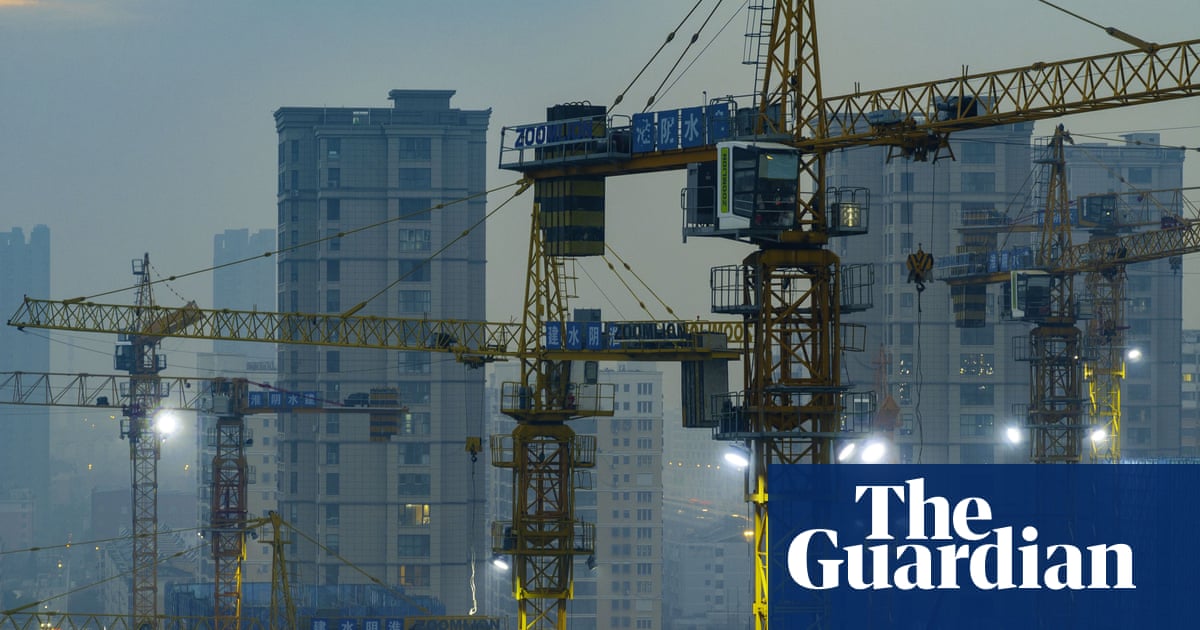
Beijing has for years come under pressure to introduce much-needed reforms to the country’s infrastructure and lumbering state-owned enterprises
‘The development margin is still large ... the GDP can still grow seven percent for 20 years’
BEIJING: President Xi Jinping hailed China’s “reconstructive reforms” in a New Year speech, but the sorely needed changes could be put on ice in favor of averting a potentially devastating economic downturn.
The way ahead is further complicated by a volatile trade dispute with the US that — if unresolved — will add to the burden of Beijing’s policymakers as they seek to fuel an economy that is running out of steam.
Beijing has for years come under pressure to introduce much-needed reforms to the country’s infrastructure and lumbering state-owned enterprises as part of a drive to tackle a burdensome debt mountain and transform its growth engine from investment and exports to domestic consumption.
But Gene Fang from ratings agency Moody’s said: “When trade-offs between reforms and growth arise, we expect that the priority will more often be given to supporting growth.”
Ten years ago China unleashed the full power of its financial arsenal by introducing massive stimulus measures, which helped Beijing avert the worst of the financial crisis engulfing the rest of the world.
However, that helped sow the seeds of today’s economic troubles, with debt at alarming levels and necessary economic reforms not addressed as leaders focused on maintaining stable growth and employment.
Now, with the global economy stuttering, a slowdown in key export markets is denting a crucial source of income while the country is also struggling with a plethora of structural problems such as an aging — and now shrinking — population, a dwindling pool of rural workers, overcapacity and air pollution.
And then there is the trade war with the US, which has magnified the problems while sending shudders through global markets.
“The Chinese economy is struggling, the debt mess is unresolved and the impact from the US tariffs has barely begun,” said Bill Bishop, an expert on China, who added the Communist Party will do “everything it can to juice the economy” with “multiple forms of stimuli.”
“Whether or not significant economic reforms will now also be forthcoming, and not just more promises, is the trillion-dollar question,” he said.
Xi and US President Donald Trump may have agreed a temporary truce in their multi-billion-dollar standoff — and Beijing Friday announced face-to-face talks would begin next week — but there is little optimism the row will be brought to an end any time soon.
In the absence of a breakthrough in current negotiations, “the US-China trade conflict will weigh on growth in China and on the wider Asia-Pacific region, via a slowdown in Chinese demand,” according to analysts Oxford Economics.
The impact of the trade row came in to full view this week when Apple announced a shock cut in its revenue forecast for the December quarter blaming the steeper-than-expected “economic deceleration” in China and emerging markets and citing the China-US frictions.
While analysts still believe China — which last month celebrated 40 years since opening up to the world — should still achieve its growth target of 6.5 percent for 2018, that would be the weakest rate in almost three decades.
That after an average growth rate of 9.7 percent a year between 1978 and 2015.
Raymond Deng, an analyst at Singapore-based DBS Bank, said the government must raise domestic consumption and inject “sufficient” cash into the market, while “eliminating state-owned enterprises with backward production capacity.”
But with a debt crisis brewing, authorities have decided against 2008-like stimulus, instead opting for a series of separate measures including making it easier for banks to lend and much-hyped tax cuts.
Some sectors saw a one percent drop in VAT and taxpayers will in 2019 benefit from deductions in education, critical health care and mortgage repayments, while the rate at which tax kicks in has also been raised.
“If the tax reduction plan is implemented well, it cannot only boost corporate profits and household consumption in the short term, but also improve the economic structure in the long run,” said Zhu Chaoping, a strategist at JPMorgan Asset Management.
Meanwhile, Beijing University economics professor Su Jian believes support for consumption requires a rise and a “better distribution” of household income, as well as increased health, education and social support to steer people away from precautionary saving.
He also points out that China’s GDP per capita is about one-eighth of that of the US.
“The development margin is still large... the GDP can still grow seven percent for 20 years,” he said.
However, for many economists wealth generation could continue to weaken.
Zhu expected “a GDP increase of around five percent across the next 10 to 15 years,” while Capital Economics expected the growth rate to even decline to two percent by 2030.











